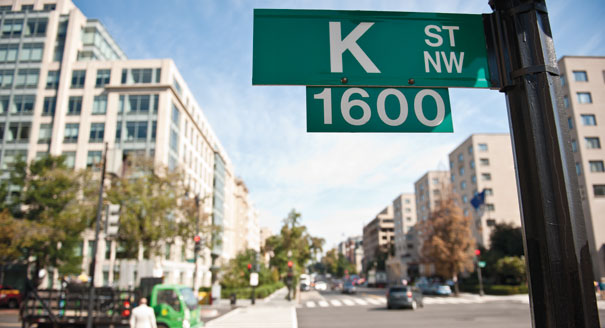And just for the record, although GE was in favor of mandating compact fluorescent lightbulbs they make in China, the folks who lobbied really hard to get rid of incandescents were Plillips Electronics and WalMart (WMT because they sell so many lightbulbs).
From Priceonomics:
In 1947 Only 3% of Congressmen Became Lobbyists
This week, the talk of the town - if your town is DC and your crowd occupies the real estate around the country’s power structures - is Mark Leibovich’s new book This Town. As chief national correspondent for The New York Times Magazine, Leibovich chronicles the intersection of money, politics, media, and vanity in the nation’s capital. Discarding the idea that polarization broke Washington, he writes that DC’s power nexus is too interconnected. The system is broken, but the process that enriches the political elite is humming along.
The narrative is not novel, but This Town is garnering attention for Leibovich’s ability to describe it with the intimacy of a longtime observer and insider.In a review of the book, political journalist Fareed Zakaria notes that if systemic political corruption lies at the root of civilizations’ downfall, then Leibovich’s book could be a primary source for historians studying how “America lost its way.”Those future historians will note that the structure of perverse incentives is strong. To quantify the scenes he describes, Leibovich cites the increase in the lobbying industry: Only 3% of Congressmen became lobbyists in 1947; today 42% of former members of the House and 50% of former senators take lobbying jobs. The number of registered lobbyists in DC increased from 5,000 in the fifties to 12,000 today - a figure that hides the thousands of lobbyists who hide behind titles like consultant and strategist.The lobbying industry has grown because it is profitable and it works.In 2004, Congress passed the American Jobs Creation Act of 2004. The Economist summed up the interpretation in the press and among policy analysts:“The new law started life as a laudable effort to get rid of a $5-billion-a-year tax subsidy for exporters that the European Union had complained about and the World Trade Organisation had deemed illegal. But it has ended up as a 650-page horror that adds endless complexities to the tax code and doles out favours to a cornucopia of special interests from tobacco farmers to bow-and-arrow makers.”Although it did eliminate the original subsidy, the Act took the name of a job creation bill as a euphemism for the handouts distributed to the industries that pestered for them. An academic study that compared companies' lobbying costs to the benefits they received from the law concluded that the returns to lobbying were 22,000% - $220 of tax breaks or subsidies for every dollar spent lobbying. John McCain called the bill “No lobbyist left behind.” ...MORE
